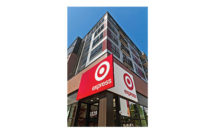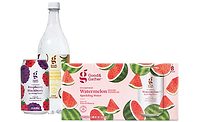According to IBISWorld’s July 2012 report, “Warehouse Clubs & Supercenters in the US,” supercenters are one of the fastest-growing industries in the retail sector and have shown consistent growth during the last five years. These stores have weathered the recession and the years following by offering a large selection of low-cost, quality products that fit with consumer budgets, the Santa Monica, Calif.-based market research firm reports. Plus, they offer a convenient, one-stop shopping experience for busy consumers to handle all of their errands in one trip by providing food and beverages, clothing, toys and electronics, jewelry and accessories, home products, pharmacies and more.
Willard Bishop’s June 2012 report, “The Future of Food Retailing,” states that mass merchandisers experienced 5 percent growth reaching $47.2 billion in 2011 in the grocery and consumables segment while their supercenter big brothers grew 5.6 percent to $184.2 billion. The Barrington, Ill.-based market research firm notes that mass merchandisers and supercenters control 4.4 percent and 17.2 percent, respectively, of the grocery and consumables market and carry about 95,000 and 100,000 SKUs, respectively, of grocery and consumables.
In fact, food and beverages make up approximately 37 percent of supercenter sales, IBISWorld reports. This retail trend has helped some mass merchandisers and supercenters, like Walmart, become some of the top grocery retailers in the country, it says.
In addition, both mass merchandisers and supercenters posted gains this year in sales of beer, premixed cocktails, and coolers and spirits, with supercenters also claiming gains in wine and non-alcohol mixer sales, according to data from Chicago-based SymphonyIRI Group. Cross-promotional deals between alcohol beverages and snack foods have enticed conservative shoppers and boosted sales, the market research firm says.
However, despite this level of domination experienced by both of these segments, Willard Bishop predicts that mass merchandisers will see a decrease in annual sales by 6.7 percent through 2016 and a decrease in market share by 2.8 percent during the same time period. Some of this revenue and market share will be lost to its supercenter sibling, it notes. However, IBISWorld says that a new sibling in the mass merchandiser family will vie for its share of the retail segment.
“In an effort to cater to rising demand for quick shopping, prepared foods, fresh produce and a more enjoyable shopping experience, major players like Walmart [and] Target … have gradually introduced convenience-store-sized locations that offer a mix of limited general merchandise and grocery selections,” IBISWorld says. These smaller-sized formats have allowed mass merchandisers to move into the previously untapped urban market, which the larger-sized stores were unable to do due to space constraints, it adds.
Bentonville, Ark.-based Wal-Mart Stores Inc. opened its Walmart Express stores in 2011 and now operates more than 10 of these mini stores in Arkansas, North Carolina and Illinois. These approximately 15,000-square-foot stores, compared with the standard 182,000-square-foot supercenters and 106,000-square-foot discount stores, offer groceries, general merchandise and even pharmacies in a quick-stop format, according to the company’s website.
Target Corp., Minneapolis, also has followed suit and opened three CityTarget stores in Seattle, Chicago and San Francisco and two in Los Angeles this year and plans to open one in Portland, Ore., and two more in San Francisco and Los Angeles in 2013, says Sarah Van Nevel, a Target spokesperson. Like Walmart Express stores, CityTarget stores offer similar products and services to their larger counterparts but also offer some customizations for each specific city. For example, the eight-page CityTarget weekly ads highlight product assortments that best resonate with consumers in its community, according to the company website.
The Hartman Group, Bellevue, Wash., did an ethnographic study of the Seattle CityTarget and described the store as “a portal to the suburbs for urbanites” on a piece of “prime cultural real estate.” The group noted that many city dwellers don’t want to spend the time and gas driving to the suburbs to visit the big-box versions of the store chains, but the CityTarget version can offer locals and tourists their basic needs, including grocery items and a section devoted to party food and alcohol, in a quick, one-stop shop during lunch or on their way home. Plus, products are available in smaller sizes so that consumers don’t have to carry bulk items with them on the train or bus, the company says.
Another driving factor in the popularity of mass merchandisers and supercenters is the low prices of their products. These everyday low price programs, in addition to sales and coupons, entice consumers who are still fiscally cautious following the recession, according to SymphonyIRI Group.
Even as the economy gains strength, SymphonyIRI predicts that mass merchandisers and supercenters will continue to see overall sales growth because consumers will stick to these retail outlets due to store loyalty and convenient selection of food and beverage products as well as merchandise. BI
What are they drinking?
Mass merchandise and supercenter shoppers often are drawn to these retail channels for the value they offer in terms of competitive price and quality products. In addition to this, Rockville, Md.-based Packaged Facts has found that supercenter shoppers have some interesting beverage consumption trends as well. Below are some highlights of Packaged Facts’ insight into Walmart, Super Target, Meijer and supercenter-only shopper trends.
Coffee
Overall, 80 percent of consumers drink coffee. Frequent Walmart shoppers are the most likely to drink coffee, while supercenter-only shoppers fall slightly below average in this category.
Tea
In general, 75 percent of consumers purchase tea in bags or packages, but consumers who shop only at supercenters are 9 percent less likely than average to do so. Overall, 56 percent of consumers purchase ready-to-drink iced teas and instant iced tea mixes, while Walmart and Super Target shoppers are slightly more likely and supercenter-only shoppers are less likely than average to do so.
Bottled and sparkling water
Overall, 67 percent of consumers drink bottled water. Super Target shoppers border on being significantly more likely than average to consume bottled water, while supercenter-only shoppers are below average. Super Target shoppers also are significantly more likely than average to consume sparkling waters.
Tomato and vegetable juice
Super Target shoppers, who overall display a tendency toward being health conscious compared with consumers at other retail outlets, show the highest tendency for drinking vegetable juices. Walmart shoppers and supercenter-only shoppers are slightly above average in terms of vegetable juice consumption as well.
Activity drinks
Likely in association with their health consciousness, Super Target shoppers are significantly more likely to purchase thirst quenchers/activity drinks.
Energy drinks
Overall, roughly 17 percent of consumers report that they drink energy drinks. Supercenter shoppers are significantly more likely to drink energy drinks than average consumers, with Walmart, Target and Meijer shoppers more than 20 percent more likely to consume energy drinks than average. Supercenter-only shoppers also are more likely than average to purchase energy drinks.
Carbonated soft drinks
Overall, 69 percent of consumers drink regular soda. Walmart and supercenter-only shoppers are the most likely to purchase these items and trend slightly above average in this category. Thirty-seven percent of all consumers drink diet and/or sugar-free sodas. The health-conscious Super Target shoppers are significantly more likely than average to drink diet or sugar-free sodas, with more than half of these shoppers doing so. Slightly less than 50 percent of households use powdered soft drinks. Super Target, Walmart and supercenter-only shoppers are the most likely to do so and trend slightly above average in this category. Frequent Walmart shoppers are significantly more likely than average to consume powdered soft drinks.





